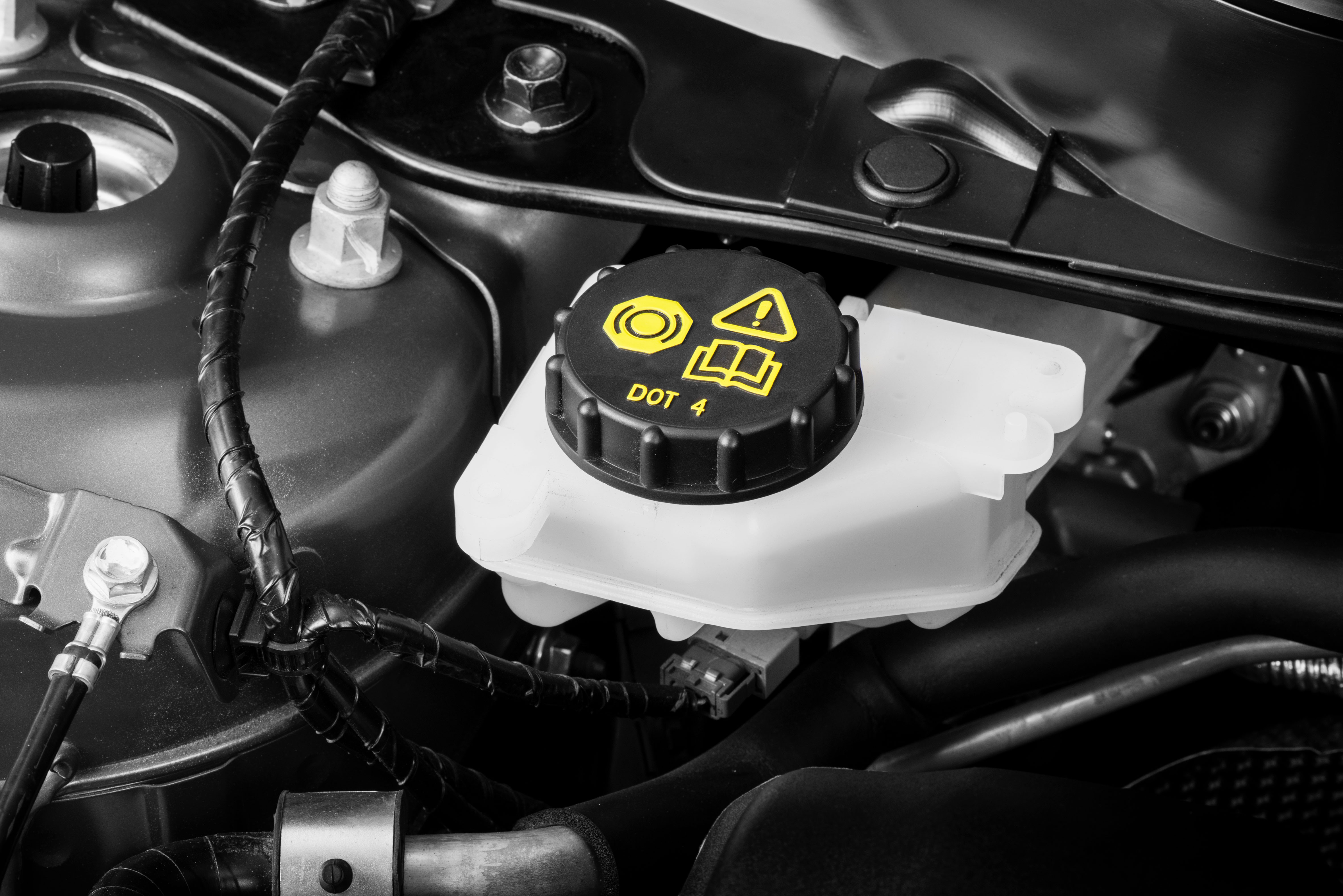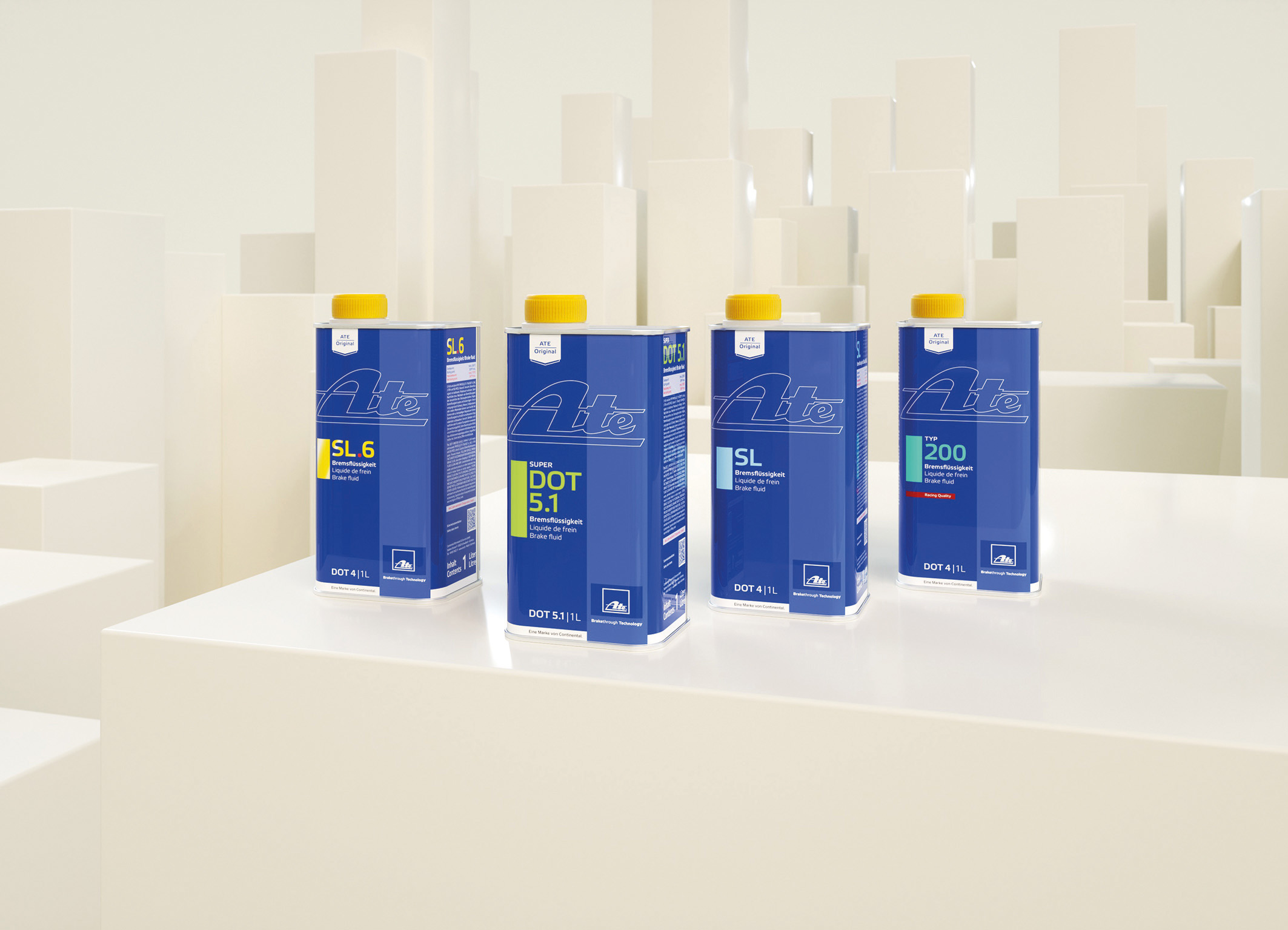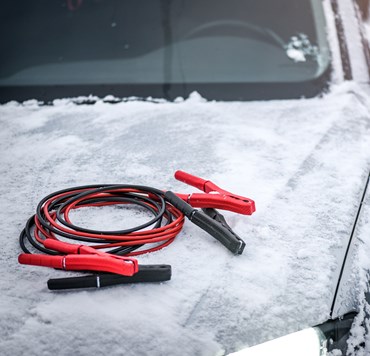Replacing brake fluid? Many drivers prefer to have this done in the workshop. No wonder, because if they try to do it themselves and make a mistake, it can mean the failure of the entire braking system. Even you, the professional, must adhere to the specifications of each vehicle manufacturer – and you must always have the right product at hand.
Replacing the fluid often doesn’t cost you too much time in the workshop, but it’s still a very responsible task – so it’s all the more important that you always comply with the individual vehicle manufacturer’s specifications.
The class is decisive: Be prepared for all DOT specifications
As you well know: The manufacturer indicates the DOT class a vehicle requires for brake fluids on the cover of the expansion reservoir. These standards define the minimum requirements for brake fluids and specify different viscosities, dry and wet boiling points and other requirements:
- Vehicles with electronic braking systems such as ABS or ESP generally require low-viscosity brake fluids like DOT 4 Class 6 or DOT 5.1 variants,
- while DOT 3 brake fluids are compulsory for many Asian manufacturers’ vehicles and other older models.
So not all DOT classes are suitable for all vehicles, and not all of them can be mixed together, so you must always be prepared to encounter any specifications in your workshop.
One for (almost) all: The ATE Super DOT 5.1 as a workshop standard
The new ATE Super DOT 5.1 premium brake fluid makes things easier for you – because it’s compatible with brake fluids of the DOT 3 and DOT 4 classes, it can be used for almost all vehicles with the appropriate approval (the only exception: vehicles in which DOT 3 must be used). More and more leading car manufacturers are also using DOT 5.1 brake fluid as original equipment – so with the ATE Super DOT 5.1, you have a brake fluid that even manufacturers are using as standard.
ESP, ABS and FAS: What must a brake fluid do?
And what about more modern vehicles with alternative drive systems or driver assistance systems? The most important things first: Although electric and hybrid vehicles have no special requirements for brake fluids from a purely technical point of view, the fluid specified by the vehicle manufacturer should nevertheless be used in these vehicles. In the case of electric vehicles, these are often liquids with a high wet boiling point. The reason for this is the relatively heavy vehicle weight, which means a high peak load on the braking system – so the brake fluid must be able to withstand higher temperatures to ensure efficient braking performance. The development of new recuperation technologies has also ensured that the braking system is used less frequently but more intensively in emergency situations.


However, in the case of driver assistance systems that act directly on the brakes, the viscosity of the brake fluid is the most important factor. For ABS, ESP, etc. to function safely and reliably, the brake fluid must be able to penetrate the systems’ hydraulic units in fractions of a second. Low-viscosity brake fluids have an improved flow behavior, so they get to where they’re needed faster, even at very low temperatures.
You’re ideally prepared for both of these cases with the ATE Super DOT 5.1. It combines a high wet boiling point of 180° Celsius with excellent viscosity values that even exceed the class DOT 5.1 requirements for brake fluids. Conclusion: You’re well prepared if you have the ATE Super DOT 5.1 as a standard brake fluid in your workshop.
Here are all the advantages of the ATE Super DOT 5.1 at a glance:
- Compatible with class DOT 3 and DOT 4 brake fluids (CAUTION! Mixing these liquids is not recommended)
- Brake fluid from the original equipment available for the spare parts market
- High wet boiling point of 180° Celsius ensures extended replacement intervals of up to three years
- Viscosity values even exceed ISO4925 class 6 with a maximum of 750 mm²/sec. at -40 Celsius
- All the relevant information about brake fluids is clearly explained in the Expert Talk:https://www.youtube.com/watch?v=F800stbUTCM
Do you want to be regularly informed about exciting topics in the aftermarket? Subscribe to the newsletter




